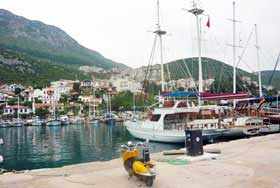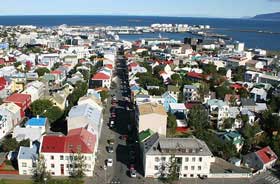Currency shifts have created some new bargains for summer 2012
As the summer travel season is approaching I thought it would be interesting to look at the currency situation for travelers. The most interesting and perhaps unusual thing is that almost all major currencies have been quite stable against the US dollar (and against each other) for the past year. This contrasts to a couple years ago when the US dollar was tanking against almost everything.
These exchange rate charts can be a bit misleading because there are often notable swings within a few months, and a visitor can get either lucky or unlucky depending on which way it went.
Still, I think it’s useful and interesting to see where things have gone in the past 6 months and past year to see which countries are at least better bargains than they were exactly a year ago.
Major currencies in the last 12 months
(currency – year ago – 6 mo – now – USD rise/fall)
- Brazilian real – 1.58 – 1.75 – 1.87 +18%
- Turkish lira – 1.53 – 1.85 – 1.79 +17%
- Indian rupee – 44.30 – 49.40 – 51.80 +17%
- Iceland kroner – 111 – 120 – 128 +15%
- Poland zlotych – 2.80 – 3.15 – 3.20 +14%
- Mexican peso – 11.60 – 13.4 – 13.1 +13%
- Czech koruny – 16.95 – 18.0 – 18.96 +12%
- Croatian kuna – 5.15 – 5.40 – 5.72 +11%
- Euro – 0.70 – 0.73 – 0.77 +10%
- Argentine peso – 4.07 – 4.25 – 4.40 +8%
- British pound – 0.61 – 0.63 – 0.63 +3%
- Canadian dollar – 0.96 – 1.02 – 0.99 +3%
- Australian dollar – 0.95 – 0.96 – 0.96 +1%
- Japanese yen – 82.50 – 77.20 – 81.31 -1%
Bargains compared to last year
Again, most currencies have been quite stable for the past year against the US dollar and each other. But here are the highlights of some good destinations that now are at least a little cheaper this year compared to going into summer 2011.
Brazil

Rio de Janeiro has nice weather year round so it’s a good choice in the off season with cheap hotels. The rest of the country is even cheaper, of course.
If you can find a cheap flight Brazil can be quite inexpensive as long as you avoid December through Carnival time, and the weather will still be pretty nice.
Turkey

Antalya is an increasingly popular holiday spot for the sunshine crowd, and it is teaming with interesting ruins and sights in addition to its restaurants and nightlife. Cappadoccia is a must-visit for anyone in the country, and fortunately it’s as cheap as it is lovely.
India

India is also the cheapest country in the world for budget travelers, still, as long as they aren’t picky about “international standard” hotels and such.
The key to visiting India is to minimize your time in the big cities like Delhi and Mumbai, partly because those are fairly expensive anyway, and head to the smaller towns and even the beach resorts, including the world famous Goa.
Iceland

Most people only spend a day or two in the capital before renting a car or taking a bus tour around the island to visit the various outdoor highlights. Depending on how that’s done, it can be quite cheap these days.
Eastern Europe

Check out the 3-star Europe Index and the Europe Backpacker Index for 2012 and you’ll see a long list of interesting cities that are far cheaper than the obvious ones.
Argentina is no longer a bargain

Buenos Aires is truly one of the world’s great cities, and it’s still a relative bargain with prices a bit lower than, say, Paris or Rome, but a few years ago it was half that price and a few years from now it might be quite a bit worse. Go now or you may not get the chance.
